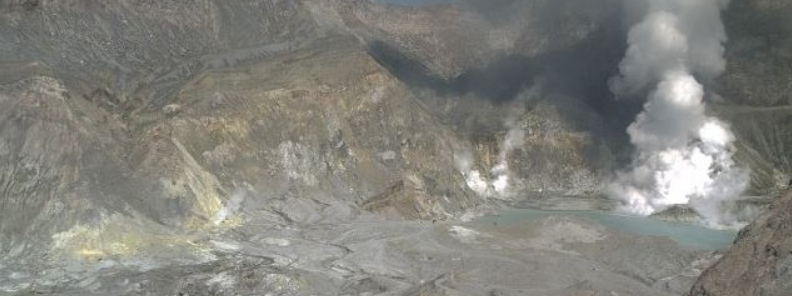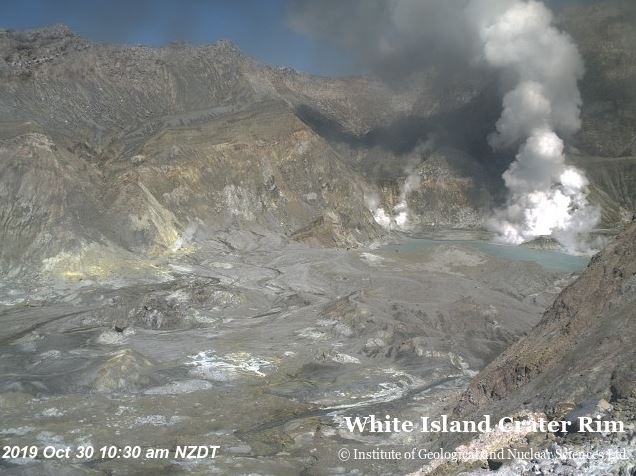Increased activity at White Island volcano, New Zealand

Volcanic unrest continues at Whakaari/White Island and some monitored parameters show an increase in activity, with a level of uncertainty about what this means, GeoNet Duty Volcanologist Yannik Behr reported October 30, 2019. Hazards on the island remain unchanged and the Volcanic Alert Level remains at Level 1.
Over the last several months, GeoNet observed a change in the amount of SO2 gas output and level of volcanic tremor. Both show an increasing trend and are at the highest level since 2016.
The SO2 gas originates from magma (molten rocks) at depth and the data suggest a possible increase in gas passing through the volcano from depth. Volcanic tremor can occur for many reasons, including the movement of gas through the volcano, changes in the geothermal system, and even surface activity (geysering or ash emissions).
"Changes in volcano monitoring parameters are common and can be explained by a range of processes, including an increased level of unrest, or general variations in background and surface activity. Slight uncertainty about the exact meaning of these changes arises from these possible processes," Behr said.

The crater lake level has been rising since early-August 2019.
The rising lake level has impacted the surface activity around the active vents on the west side of the crater floor, and geysering-type activity has been observed in this area. Other recent measurements made on the island (soil gas, fumarole and water chemistry, ground deformation, magnetics, visual images from the web cameras, and earthquake activity) show no significant changes.
Overall, none of the monitored parameters are outside the expected range for minor volcanic unrest and associated hazards. While the pattern of signals shows similarities with the 2011 – 2016 period and could suggest that Whakaari/White Island may be entering a period where eruptive activity is more likely than normal, recent observations can also be explained by the increased gas flux which leads to geysering and lake level changes.
The link between gas flux and future activity is not well understood and the subject of ongoing research efforts.
Geological summary
White Island is a mostly ice-covered volcanic complex at the northern end of the island consisting of two shield volcanoes and overlying pyroclastic cones.
The youngest Potassium-Argon date obtained was 0.17 million years ago and there is no evidence of Holocene activity.
Featured image credit: GNS Science – GeoNet

Commenting rules and guidelines
We value the thoughts and opinions of our readers and welcome healthy discussions on our website. In order to maintain a respectful and positive community, we ask that all commenters follow these rules.